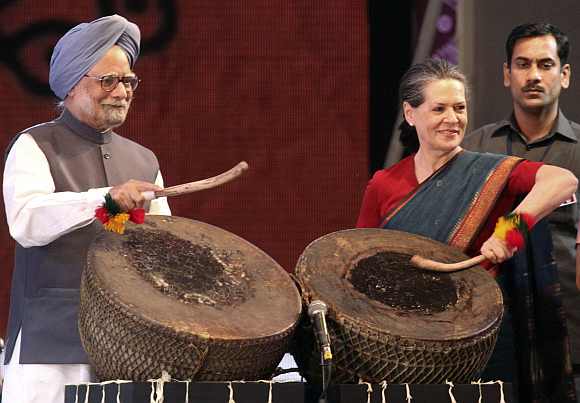
The three-year-old UPA 2 lacks energy. Sonia Gandhi can no longer afford to continue with the fiction that someone else can do the job and should take over from Prime Minister Manmohan Singh.
The second United Progressive Alliance government is observing its third anniversary. The second of those three years saw rampant and large-scale corruption emerge as a hot-button issue. The third and latest year has been disastrous for the economy.
So the two principal attributes credited to Prime Minister Manmohan Singh -- as a man of probity and as the author of economic reforms -- have ceased to be political assets for the Congress party and the government. Those favourably inclined to the prime minister have been advising him for the past many months to get down to business. Despite the occasional promises made about action being forthcoming, what has been in evidence is more drift.
And so the government gives every impression of being rudderless, limp and without energy or ideas, at a time when the Congress faces severe challenges in retaining popular support in key states across the country. The economy meanwhile is in danger of slipping from distress into crisis. Whether one likes it or not, it is time for change -- a new government and a new prime minister.
...
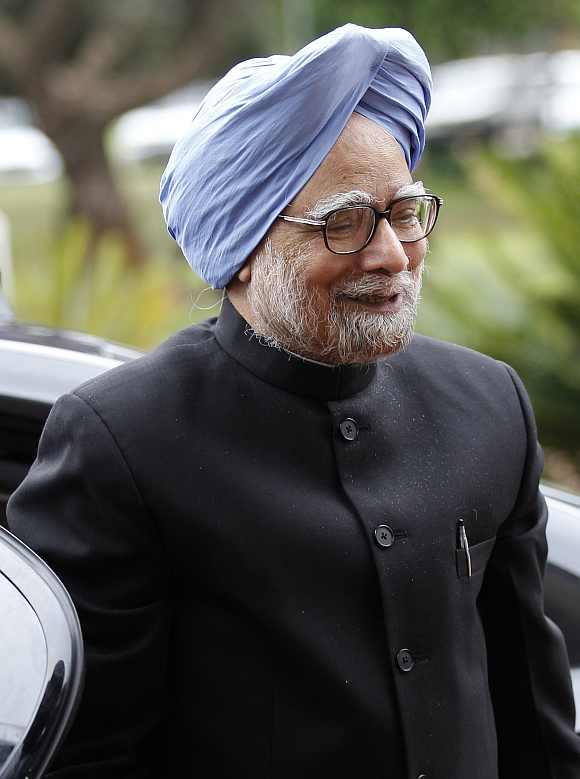
At the heart of the government's problems is the diarchy that prevails, something which the Westminster system of parliamentary government is simply not equipped to deal with. Political power rests with Sonia Gandhi, and she therefore has an important say in what must happen.
In practice, therefore, the prime minister serves so long as he enjoys her confidence, and he has to consult her on ministerial appointments. More importantly, he cannot dispense with any of them if he so chooses. This fundamentally undermines his authority in the Cabinet, a situation which many ministers have exploited to thumb their noses at him, including (former telecom minister) Andimuthu Raja.
The core committee, which meets every week, is a sensible instrument for achieving coordination between the government and the party, but there is no getting away from the different perspectives and priorities of the prime minister and the party president.
And since Dr Singh is by nature non-assertive, he has chosen to give in more often than not. The government that he leads, therefore, does not bear his stamp. And since nature does not tolerate a vacuum, some members of the National Advisory Committee, which Gandhi chairs, have often sounded as though they are a super-government. One of the sins of the UPA has been to devalue the office of prime minister, to reduce it to a chief operating officer.
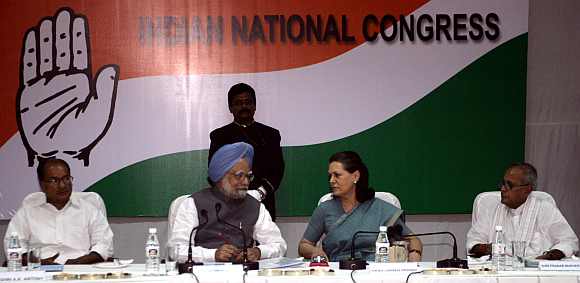
Old ideas, poor management
Many other things are wrong with this government. For a start, its leading lights are simply too old. The prime minister will be 80 in a few months, while the foreign minister is already 80. Mukherjee is 77, and Antony 71. Among those exercising the sovereign functions of the state, only Chidambaram (67) is below 70.
In the Cabinet as a whole, 15 of 34 ministers are 70 or older. Any government with so many old people, who have little to look forward to other than political survival for a few more years, is likely to be short on energy and initiatives, and tied to old ways of thinking. It also matters that most of the stalwarts in the Cabinet are political lightweights who have no real clout with voters in their states. A lightweight prime minister has around him a bunch of other lightweights.

This may have to do with the nature of the Congress party -- if it is to be protected and preserved as family property, the party's only real vote-getters must be from the Gandhi family; and young ministers like Jyotiraditya Scindia and Sachin Pilot cannot be allowed to flower too early or they might outshine Rahul Gandhi.
It is frequently said that the bane of this government has been its recalcitrant allies. Perhaps, but how much of the failure to carry them along rests with the Congress? How often has the UPA actually met as an alliance? Why does it not have a common minimum programme, which everyone has agreed on?
Why is there no effective system of discussion and consultation? Is it simply because the leading lights of the UPA lack political ability -- the prime minister is reticent if not retiring, the home minister gets people's backs up, and the finance minister has too much on his plate to focus on anything in particular? In any case, the ministerial mathematics tells its own story:
Twenty eight out of 34 Cabinet posts are with the Congress, as also all seven positions of minister of state with independent char#8805 that's a score of 35 out of 41. Of the six posts with five allies, the government has got almost unstinting support from Sharad Pawar's Nationalist Congress, Farooq Abdullah's National Conference and Ajit Singh's Rashtriya Lok Dal.
When push came to shove, the Dravida Munnetra Kazhagam too played along, even allowing its Cabinet representation to shrink. The sole problem case can be said to be Mamata Banerjee. Is this really an unmanageable situation, or a failure of management?
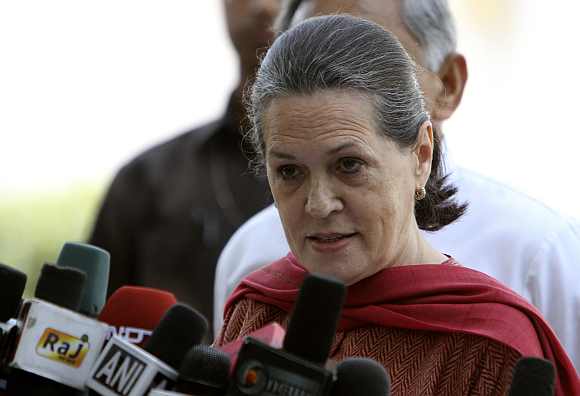
Step in, Ms Gandhi
It has long been speculated that, at some stage before the 2014 elections, Rahul Gandhi (who is 42) would take over the reins of government. But his poor performance in the recent UP Assembly elections, coming on top of his poor record of attendance and participation in Parliament, as well as his failure to articulate policy positions that give clues to how he approaches issues, means there is no case for asking him to take charge.
That leaves Ms Gandhi as the only viable option, despite concerns about her health. She may have listened to her "inner voice" when declining to take the big job eight years ago, but a lot of water has flown under the bridge. She tried an experiment, it stopped working long ago, and she can no longer afford to continue with the fiction that someone else can do the job.
It is she who has political power and leadership of the largest party in Parliament; she therefore should be the prime minister. Those who fret about the direction of economic policy will wonder about her populist instincts, which are partly responsible for the yawning fiscal deficit. It must be hoped that, when she assumes direct responsibility, the logic of the numbers will prevail in her judgment calls.
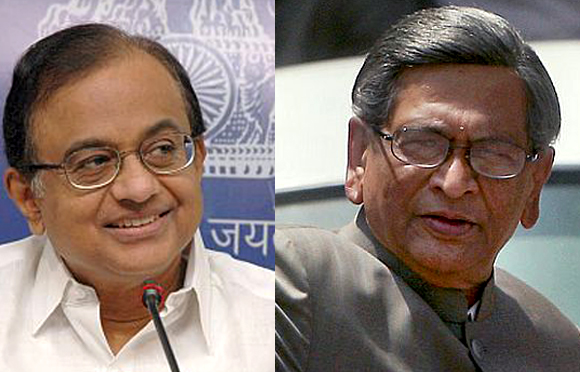
It is probably too late to offer Dr Singh an honourable way out by making him the next president. At this stage of the game, Pranab Mukherjee -- whose record as finance minister is nothing to write home about -- should move to Rashtrapati Bhavan, and Ms Gandhi should bring in a new, younger team that will use the two years left to the UPA to get the country and the economy back on the rails.
Chidambaram has done a creditable job as home minister, and is best placed to move back as finance minister. He is familiar with the issues, is decisive, and has a more contemporary approach to policy questions. External Affairs Minister Dr (S M) Krishna should sensibly retire, and Ms Gandhi can bring in fresh faces at home and external affairs. That is the only way to give the country some hope of having a functioning government once again.
...